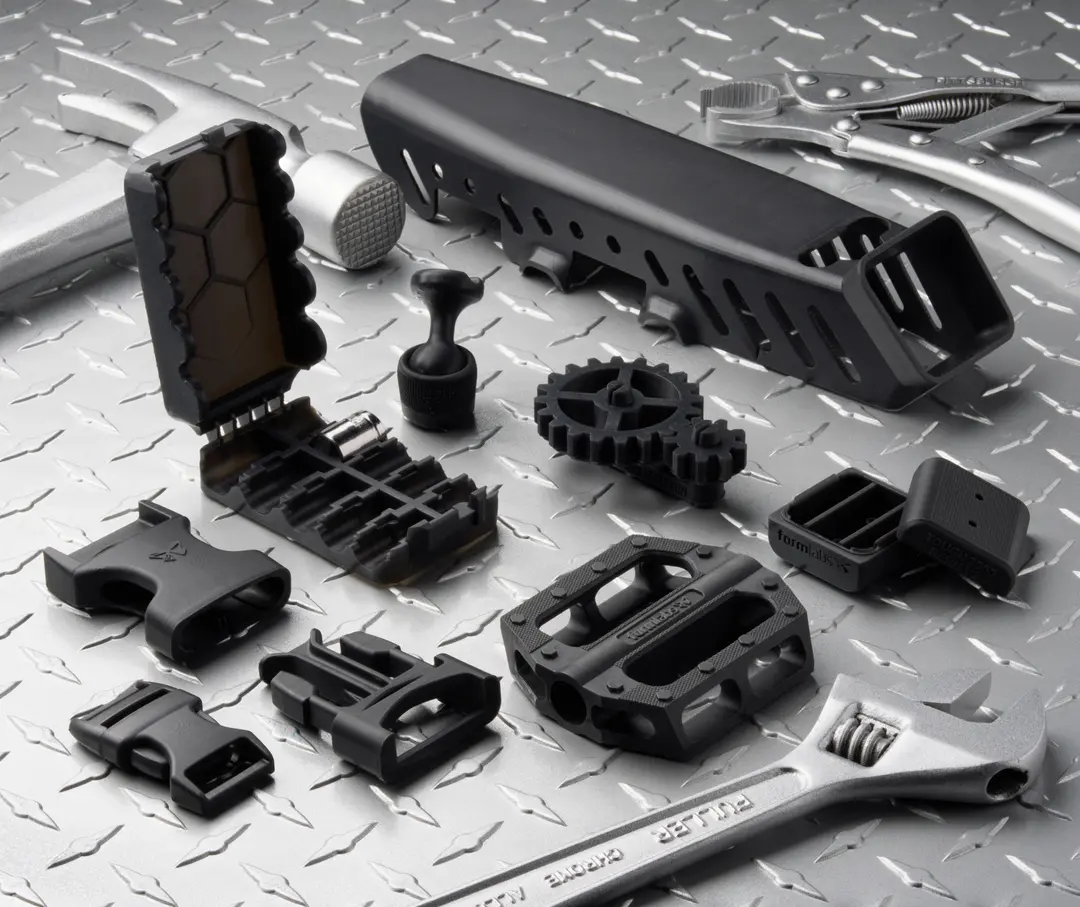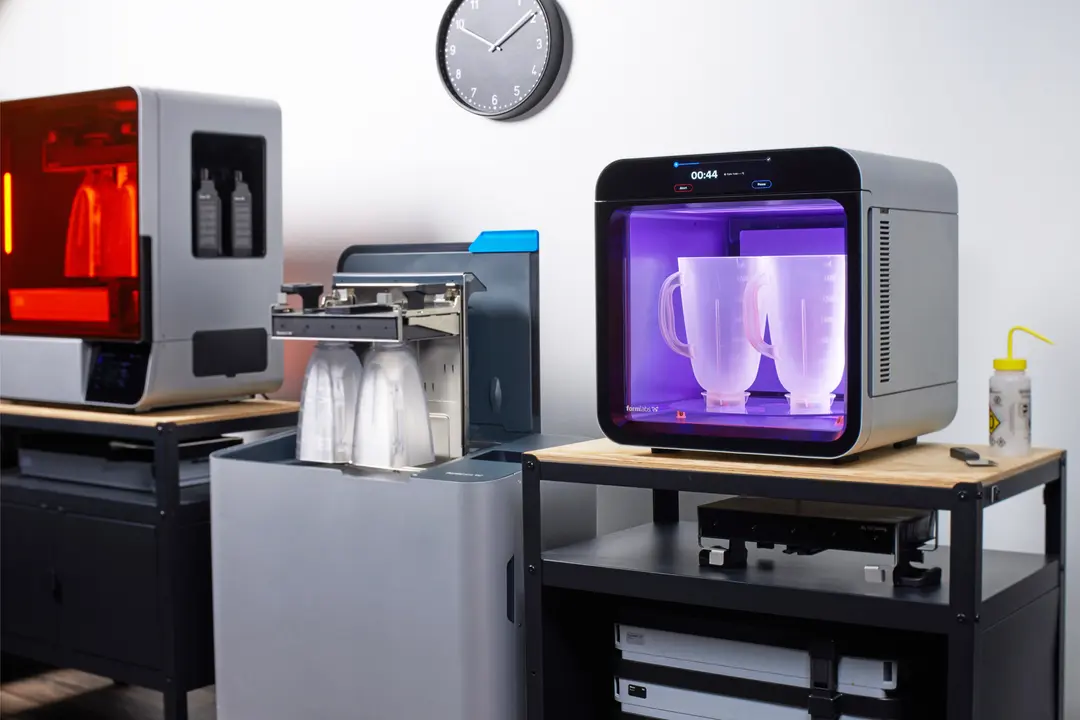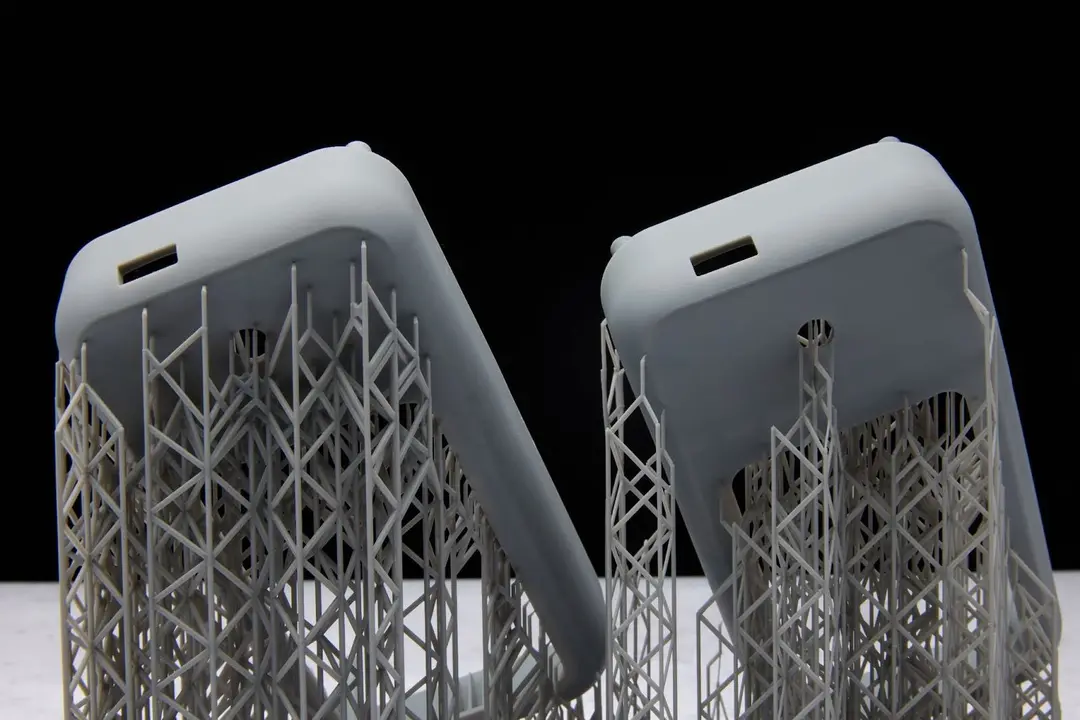
This month marks the ten year anniversary of the founding of Formlabs. Just over a year after getting started in a classroom at MIT, on September 26, 2012, Formlabs launched our Form 1 Kickstarter campaign with a simple pitch: high-resolution 3D printing belongs on your desktop.
In 2010, there was a lot of hype and buzz around 3D printing, but no one fully understood the impact it was going to have over the next decade. Back in 2010, a $5,000 3D printed prosthetic leg was considered a sign that the industry was becoming more affordable. At the time, FDM 3D printing was the main printing technology available on the desktop, with a heavy focus on DIY and hobbyists. Professional SLA and SLS 3D printers cost over $100,000, meaning only a select few large businesses had access to them.
Formlabs was created because there was a market need for an affordable, high-quality SLA 3D printer. We thought there was a massive opportunity to empower designers and creators the world over to bring their digital creations to life.
Ten years later, and nine years since our kickstarter, we wanted to pause to answer this question: what have people been printing for the past ten years? With the power to create anything, what did they make? Here are ten projects that stand out to us.
3D Printed COVID-19 Swabs
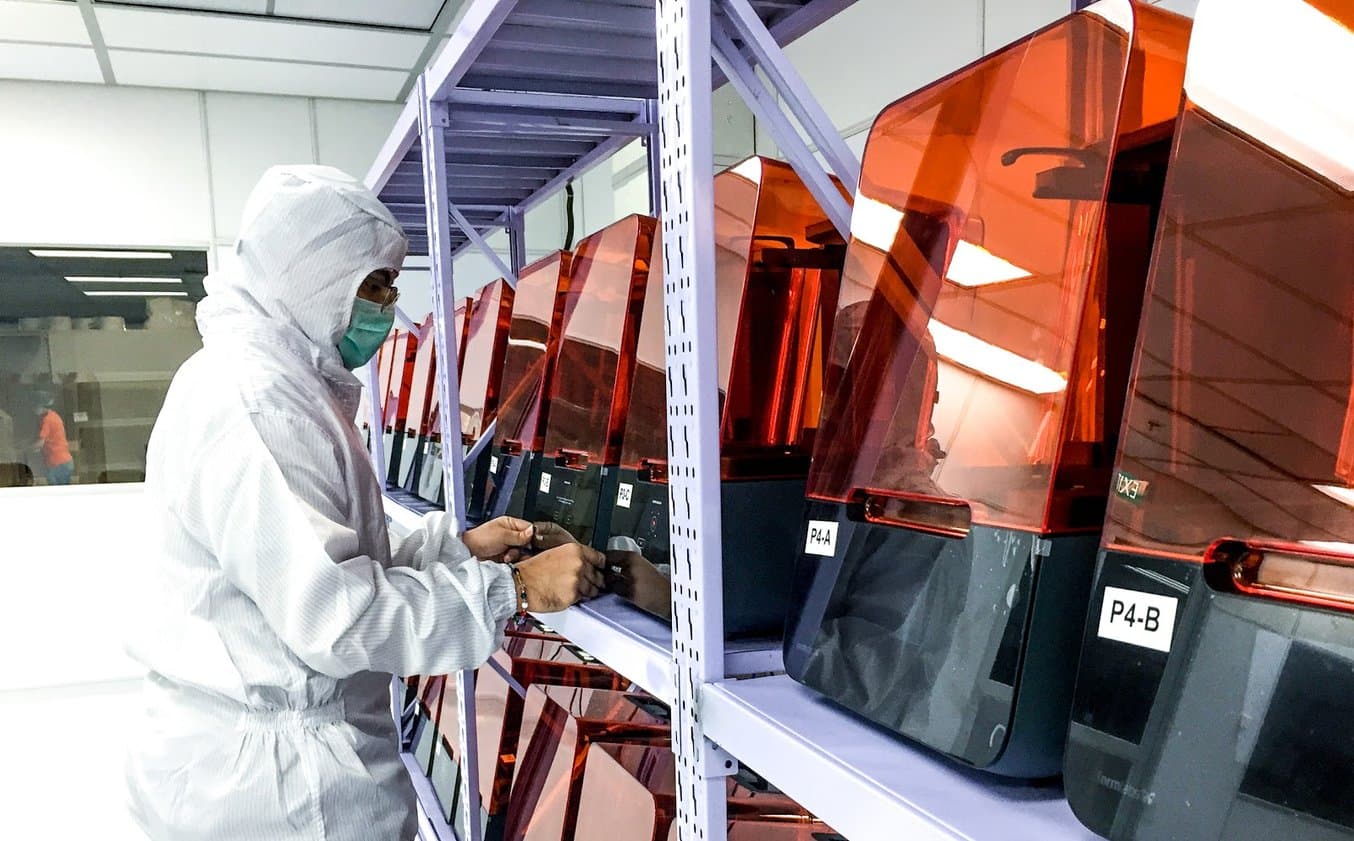
As COVID-19 spread globally, test swab shortages impacted healthcare systems around the world. Teams around the world started working on new designs for 3D printed nasopharyngeal (NP) swabs to help alleviate supply chain shortages.One team from the USF Health’s 3D Clinical Applications Division created an initial design, working with Northwell Health and collaborating with Formlabs to develop prototypes and secure materials for a 3D printed alternative. Over the span of one week, the teams worked together to develop a nasal swab prototype and test it in the USF Health and Northwell Health labs. In two days, USF Health and Northwell Health developed prototypes using Formlabs’ 3D printers and biocompatible, autoclavable resins.
Over the next 12 months, the USF Health design helped create over 70 millions nasal swabs in 50 countries.
In Singapore, a healthcare consortium led by Dr. Ho Chaw Sing went to work to develop their own test swab design. Dr. Ho Chaw Sing, the managing director of the National Additive Manufacturing Innovation Cluster (NAMIC), called for the support of Formlabs and our distribution partner Eye-2-Eye Communications as they needed to quickly develop a clinically validated, cost-effective 3D printed nasopharyngeal (NP) swab to combat imminent supply chain shortages.
'We are extremely proud to be helping in the global fight against COVID-19. NP swabs enable testing, which is a critical element in controlling the pandemic, and Project Python will provide Singapore with significant domestic production capabilities of these swabs. We have now helped establish swab manufacturing facilities in several countries around the world, which is a testament to the agility and distributed manufacturing capabilities 3D printing can offer.”
Formlabs CEO Max Lobovsky
Dávid Lakatos, Formlabs Chief Product Officer, said: “The onset of the COVID-19 pandemic highlighted the vulnerability of our current manufacturing and supply chain networks. Formlabs’ print farm acts as a bridge manufacturing tool that can be quickly and reliably deployed when traditional manufacturing methods falter due to supply chain breakdowns. As we continue to learn more about COVID-19 and build the infrastructure needed to protect against the next wave of the virus or even the next pandemic, Formlabs stands ready to support.”
Over the next ten years, we will continue to see 3D printing have a major impact on the healthcare sector, from models for preoperative training to addressing supply chain shortages.
New Balance & Rebound Resin

In 2017, New Balance began a partnership with Formlabs to develop a 3D printing production system, enabling new possibilities and opportunities for innovations in footwear. The first results of that partnership were revealed a couple of years later, with the announcement that the 990 Sport TripleCell would begin shipping to stores across the United States; the 990S was met with high demand as the model sold out quickly.
Formlabs and New Balance deploy a custom made resin for footwear - Rebound Resin. Custom made materials were new for Formlabs and new for the industry - allowing businesses to print in a customized, production-grade material created specifically for their application. In this case, it was a material that could survive the daily wear and tear of being on a shoe.
“One of the things that’s really exciting for us is that it provides a very different experience for the runner”
Katherine Petrecca, New Balance General Manager of Footwear at the Innovation Design Studio
Seeing consumers wearing a shoe made of 3D printed materials was a big step forward for Formlabs, but it wasn’t our first foray into mass customization.
Mass Customization: Gillette Razor Maker
As part of its response to increasing pressure from direct-to-consumer shave brands, razor manufacturer Gillette turned to Formlabs for help launching Razor Maker™ —a platform for designing and manufacturing customized and limited edition razor handles.
Using Formlabs 3D printers as its production engine, Razor Maker™ gives consumers the power to create and order customized 3D printed razor handles in a variety of designs and colors with the option to add custom text. It also allows Gillette to rapidly launch limited edition handles such as one commemorating the 50th anniversary of the Apollo moon landing.
“Our partnership with Formlabs, and the power of their 3D printers, enable consumers to have a say on how their razors should look. We are excited to work with our Boston neighbors to pilot this breakthrough concept of customization,” said Donato Diez, global brand manager for Gillette and Razor Maker™ co-founder.
In response to the growing demand for mass customization solutions, Formlabs later launched Factory Solutions in 2020. Formlabs Factory Solutions is 3D printing reimagined to build the factory of the future for demanding industrial applications, giving brands such a Gillette the ability to take control of production infrastructure with additive manufacturing for high-throughput applications.
Working with brands like Gillette taught us something new as well: that in-house printing could scale to small batch manufacturing, empowering true mass customization for the first time. We didn’t think we would be working with major brands such as Gillette and New Balance when we first launched our Form 1 kickstarter, but are thrilled to be the driving force behind 3D printing adoption at industry-leading brands.
Shirley Technique: Cancer Survivor Receives New Jaw
We’ve already mentioned how some in the medical industry turned to 3D printing to help create COVID-19 swabs, and it would be easy to fill this list with ten incredible medical examples. The uptake in the medical industry to in-house 3D printing has been one of the biggest surprises of the past decade, with 3D printing enabling a host of new applications, from accelerating medical device development, to offering new and innovative medical tools for surgeons.
One of our first big medical stories we covered was back in 2016, when Shirley Anderson received an artificial jaw.
“The traditional process for impression, sculpting, moldmaking, and aesthetic characterization is a laborious task,” said Dr. Travis Bellicchi, a resident at the Indiana University School of Dentistry who specializes in maxillofacial prosthetics. The prosthesis was so uncomfortable that Shirley couldn’t wear it for more than four hours at a time, it was so heavy that it often slipped down, and the surface lacked realistic skin details. Dr. Bellicchi says, “I knew there was a need for a digital solution.”
The team used Formlabs 3D printers to turn the digital sculpt into a 3D printed mold, ready to cast for the final prosthesis. They had originally experimented with FDM printing, but they preferred the Form 2 SLA 3D printer because it captures intricate, pore-level surface details and provides a watertight mold.
The new 3D printed mold has a number of improvements on the original. It looks more realistic and is much lighter and more breathable so that Shirley feels comfortable wearing it for a longer period of time. The new prosthesis also has a “feather-edge margin” around the outside, a tapered silicone edge that creates a more natural break.
Dr. Travis Bellicchi
“We’ve used 3D printing to replace about 75 to 80% of the process in traditional prosthetic fabrication.”
Father Helps Son With Cerebral Palsy Walk With Custom 3D Printed Orthosis
Around the world, over 17 million people have limited control of their bodies due to cerebral palsy (CP). A diagnosis of CP can be terrifying for new parents, as they wonder whether their child will ever sit, stand, walk, feed themselves, or have a normal life.
To support children in their quest for mobility, doctors often prescribe orthoses that are intended to correct disorders of the limbs or spine by correcting alignment or providing support. But while the field of medicine has advanced dramatically thanks to modern technology, orthoses have been manufactured the same way since the 1950s.
Faced with a choice between a standard, pre-made orthosis that would have been inadequate and uncomfortable for his son, or an expensive custom solution that would take weeks or months to be delivered, only to be made quickly obsolete by a growing child, one father took matters into his own hands.
After six months of research and experimentation, he pieced together an innovative new workflow for his son:
- The patient’s feet are placed on a vacuum bag in the corrected, weight-bearing (i.e. standing) position.
- The feet are 3D scanned from the top, and the footprints are scanned from the vacuum bag using an affordable structure scanner that is mounted on an iPad.
- The scan data is merged and cleaned to produce an accurate representation of the patient’s foot.
- The custom-made orthosis is designed directly on the scanned foot in CAD software.
- The orthosis is 3D printed in high resolution using a Form 2 stereolithography 3D printer and Durable Resin.
From 3D scanning to 3D printing, Matej can manufacture a custom-made orthosis in less than 24 hours for a fraction of the cost of traditional orthoses. 3D printing also allows him to manufacture more compact orthotics that fit into the children’s regular shoes, so they’re barely visible from the outside. Thanks to the highly precise, custom fit, the devices are comfortable to wear, without the skin irritation caused by traditional custom orthoses. “Orthoses don’t need to hurt, only without pain can the children accept them,” said Matej.
Designing a 3D Printed Acoustic Violin
In 2013, to celebrate the release of a new formulation of our White Resin, Formlabs engineer Brian Chan challenged himself to create a fully-functional acoustic violin, using a 3D printer. The Formlabs materials library is something no one could have imagined ten years ago, with dozens of resins tailored for different applications, creators can choose the right material based on the properties they care the most about.
At the time, we partnered with violinist Rhett Price to debut the violin in a new video, featuring an original song composed by Rhett and recorded on the 3D printed violin.
“It was an amazing opportunity to work with Brian and Formlabs on this project, and have the chance to perform on such a modern spin of an instrument I've been playing for 23 years,” Rhett said. “The sound quality of the violin Brian engineered was unbelievable, and the technology is absolutely incredible.”
Reinventing Modern Storytelling
In 2005, five years before Formlabs was founded, Aaron Sims Creative (ASC) was formed to bring together a wide range of the world’s most talented concept and visual effects artists and create memorable characters, creatures, VFX, costumes, and gripping worlds. They’ve built a reputation as a premiere boutique design studio delivering projects above expectations, consistently challenging what viewers expect from modern storytelling. Working across a wide range of recognizable IPs, ASC has replaced traditional clay model making with 3D printing, resulting in some of the most memorable movie monsters in recent years.
“The Demogorgon was one of the first prints that we did using our Formlabs 3D printers, and we were amazed. Before that, we had always outsourced printing. So to be able to grow it in-house, and see a design that we helped create from the very beginning printed right in front of us, was kind of an amazing thing. It was like going back to the days when we used to sculpt with clay.”
For Stranger Things, ASC didn’t just build a monster. They helped set the tone, the look, and the feel of the TV show. By integrating into the creation process early, the team was able to quickly move from sketch to physical model, and help make the Netflix original become an instant classic.
Trailblazing With Peak Design
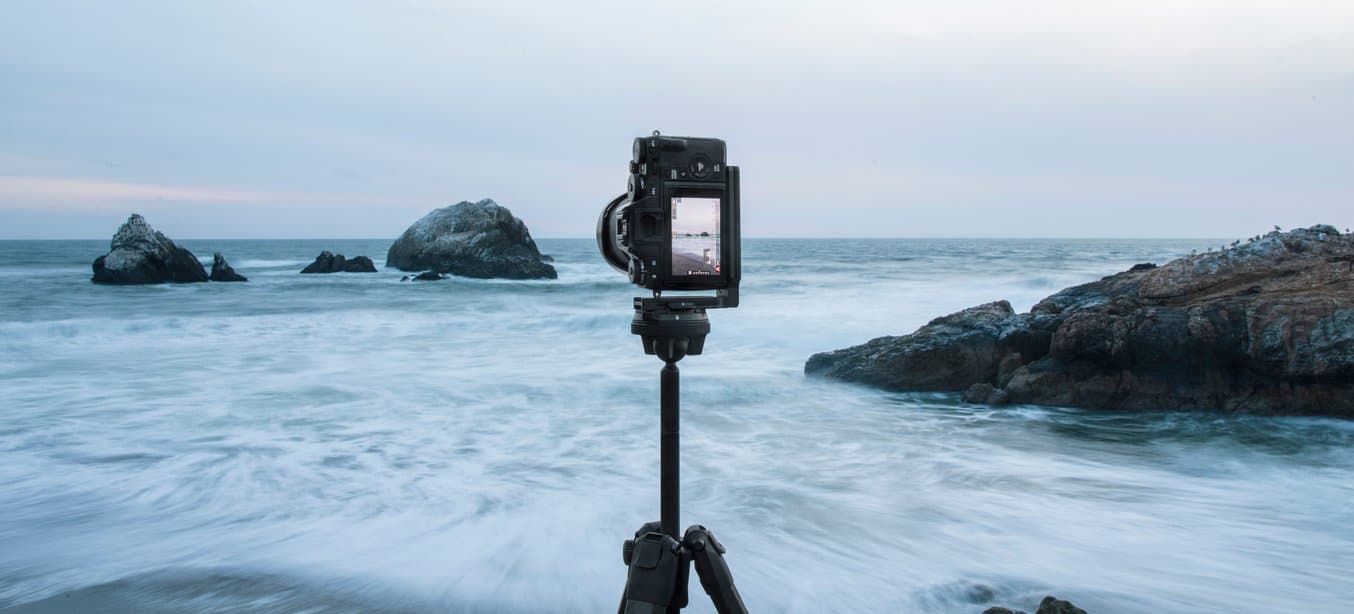
When launching a new product, engineers at Peak Design continuously ask themselves: Is this head and shoulders above its competitors? Will it make other products obsolete, and create new and passionate users?
That’s why every product they make is meticulously engineered from scratch by constantly keeping user needs in mind. Development time is never rushed; engineering teams are given months or even years to perfect designs and create innovative new mechanics. This has resulted in numerous award winning products, from travel tripods to versatile backpacks.
Peak Design highlights how far in-house 3D printing has come from a hobbyist technology. To see a company without compromise, at the top of their industry, fully integrating 3D printing into their workflow, has been gratifying. To us, Peak Design proves that every consumer brand should be incorporating 3D printing into their workflow to deliver superior products.
“In-house 3D printing has helped with both aesthetics and functionality. It has allowed us, as a small company, to create dozens of prototypes, due to time and money saved compared to outsourcing. It allowed the team to do more with less.” - Max Maloney
700 3D Printed Parts in the Ashley Furniture’s Factory - Professionals Engineering Applications
With a culture that encourages employees to actively participate in continuous improvement processes, Ashley Furniture applies advanced technologies to supplement labor and maximize the value of their staff, sourcing process improvements and innovations from the people closest to the work. 3D printed manufacturing aids are vital tools for addressing common problems that arise during the manufacturing process, and Ashley Furniture has deployed them across their production line.
When the New York Times mentioned how 3D printing is spurning a manufacturing revolution, we doubt many realized how deep that revolution would go. In-house 3D printing didn’t just lower costs, but empowered engineers and designers to create better parts, improve efficiency, and eliminate machine downtime.
Ashley Furniture showed that affordable in-house 3D printers were not toys to tinker with, but machines that could transform the manufacturing floor.
Back in 2019, there were already 700 3D printed parts at work on Ashley Furniture’s factory floor in Arcadia, Wisconsin, right alongside industrial robots and CNC milling workhorses, from assembly to fabrication.
“We're doing 10% more business out of our Arcadia facility alone with probably almost 15% less labor,” said Vaughn Pieters, senior director of casegood operations.
Reverse engineering also turned out to be a game changer for 3D printing. Now, machine downtime can be reduced by scanning and printing broken parts; instead of purchasing a complete new assembly pod for $700, Ashley Furniture 3D printed the part that needed replacement for just $1.
Formlabs Dental
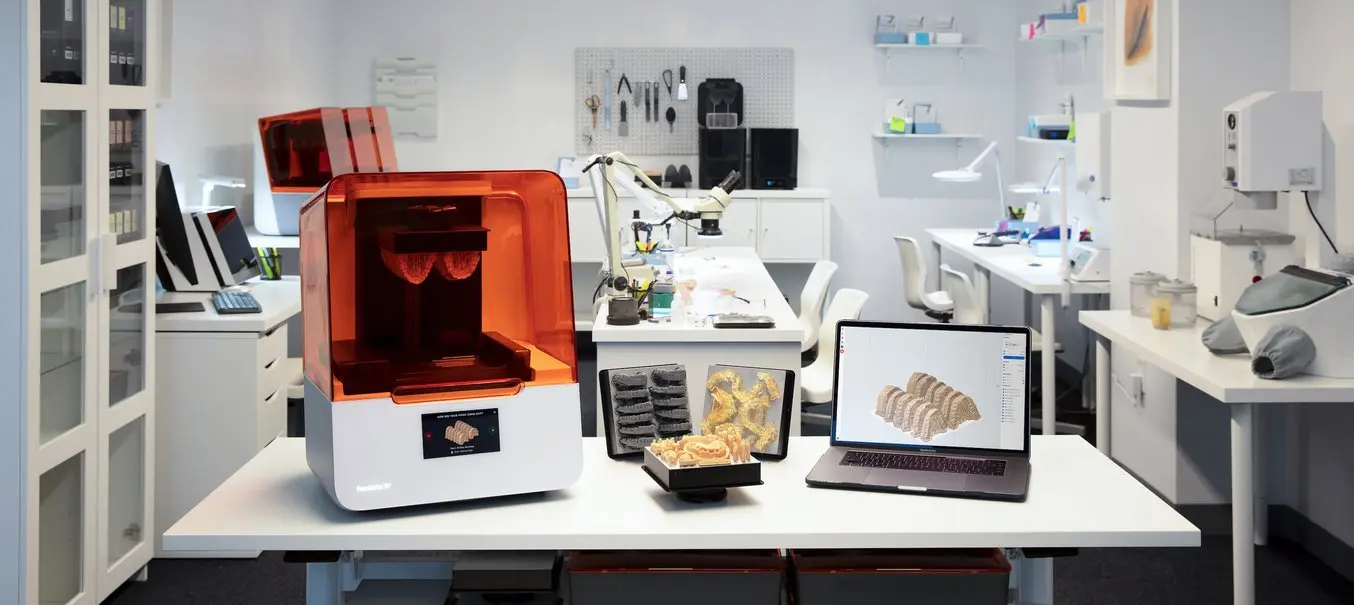
In 2019, the launch of Formlabs Dental business unit may have been our biggest announcement since our inception. Dental was always a clear use-case for in-house SLA, but the speed in which the industry adopted the technology wasn’t something anyone predicted ten years ago. According to a Key Group survey, Formlabs is the most installed 3D printer for small, medium, and large sized dental labs.
“Since launching the Form 2, 3D printing adoption within the dental industry has increased significantly," said Dr. Jay Burton, DMD, MBA, Board Certified Orthodontist at SmileMaker Orthodontics. "By bringing down the cost for entry, Formlabs revolutionized the dental market. The Form 3B (an advanced desktop 3D printer developed for healthcare) will continue to grow the technology’s adoption and help to provide dental products you’d be proud to deliver. ”
From dentists to ortho labs, the adoption of 3D printing technology has a major boon to their bottom line, and for their patients. Across the many specialties of dental medicine, practitioners, researchers, and technology providers have made strides to drive patient care forward with 3D printing. Digital workflows can shorten appointment times, get products to patients more quickly, and help dental businesses of all sizes build capability and add to their bottom line.
To highlight one user, Phil Pelligra, President of Perfect Finish Ortho Lab, told us: “we can't waste time, we create over 700 appliances per week. We don't have time for reprints of models, they need to be accurate all the time, and that is why we are Formlabs customers.”
| PolyJet printer | Formlabs printer | Price charged | Savings per model with Formlabs | |
|---|---|---|---|---|
| Single horseshoe model | $8-10 | $2-3 | $12 | $5-8 |
| Single low profile model | $10-15 | $4-5 | $14 | $6-10 |
The Next Ten Years: Follow Formlabs
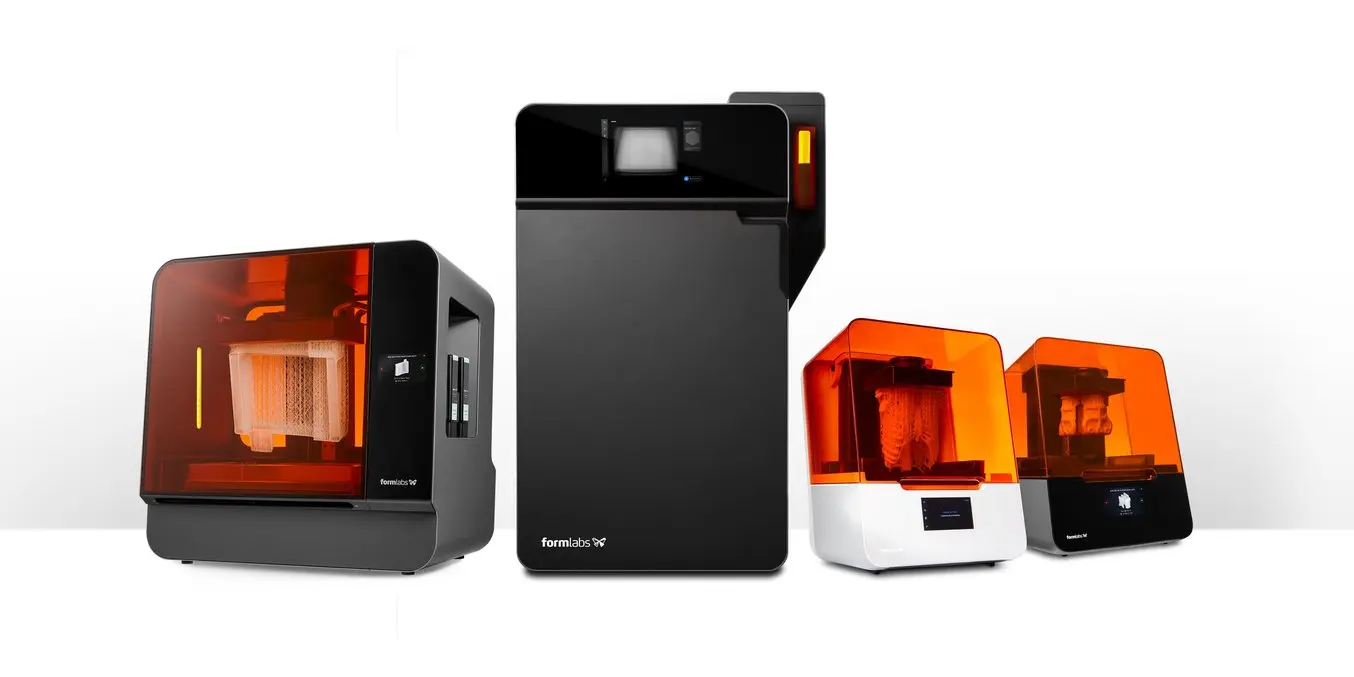
When we wrote our first ever blog post in 2012, I don’t think anyone on the team could have fully envisioned the stories listed here. We had big hopes, but our customers have continued to impress us. We will save the soothsaying for someone else, and not make predictions about the next ten years. Instead, Formlabs will stay focused on shipping the best professional 3D printers, and let the users do the printing.
Thank you to everyone who has supported Formlabs over the years - without your curiosity, the applications and achievements mentioned in this post would not have been possible.
To stay up to date on the 3D printing industry, follow us on twitter and instagram.
